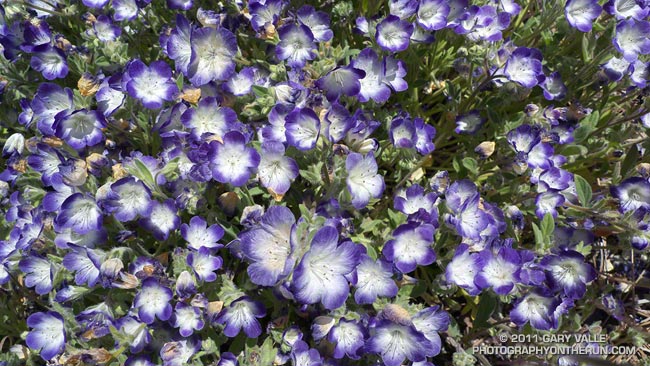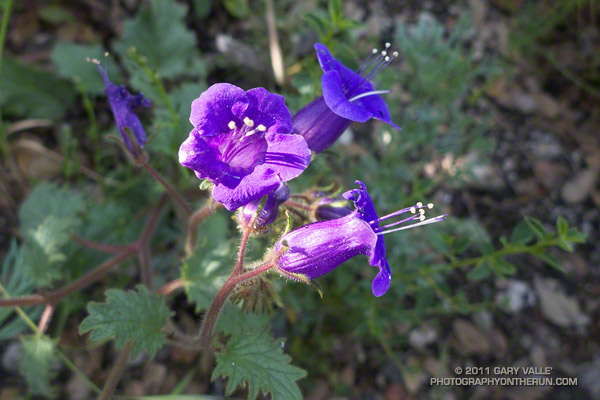
Various species of Phacelia are fire-followers and have bloomed in profusion in areas burned by the Station Fire. These are Davidson’s Phacelia (Phacelia davidsonii) along the Three Points – Mt. Waterman Trail about a mile from Three Points.

Like Turricula (Poodle-dog bush)*, many species of Phacelia can cause a contact dermatitis similar to poison oak. Generally, any Phacelia should be considered suspect, and especially those that are fuzzy and sticky.
One Phacelia that has been shown to elicit a reaction is California bluebell (Phacelia minor) — a relatively common wildflower in the middle to lower elevation areas burned by the Station Fire. In one study, it was found that the amount of two active compounds in Phacelia minor required to produce a qualified reaction was 6.3 µg and 3.8 µg; compared to 170 µg for Turricula and 1.6 µg for a component of urushiol from poison ivy.
*The taxonomic name for Turricula parryi (Poodle-dog bush) has changed to Eriodictyon parryi. The Jepson Manual: Vascular Plants of California, Second Edition (2012) has returned Turricula to the genus Eriodictyon, as originally described by Gray. According to the Wikipedia entry for Turricula (April 11, 2012), “… molecular phylogenetic analysis carried out by Ferguson (1998) confirms that Turricula should be treated as a separate genus within a clade (Ferguson does not use the term “subfamily”) that includes Eriodictyon, and also the genera Nama and Wigandia; Eriodictyon is the genus to which Turricula is closest in molecular terms, and is its sister taxon.” I use “Turricula” and “Poodle-dog bush” interchangeably as a common name.
Related post: After the Station Fire: Contact Dermatitis from Turricula parryi – Poodle-dog Bush
